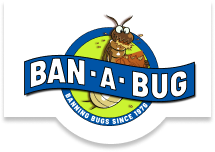One of the Top Pest Control Companies in Englewood, FL
10% Off Any Initial Service
Same-Day Service Available
Free Service Calls
Call or Text
Hours:
Request Estimate
Hero Request Form
Thank you for contacting us.
We will get back to you as soon as possible
Please try again later
Your Source for Effective Pest Control Solutions
Ban-A-Bug Pest Control Inc is a family-owned and locally operated pest control company serving Englewood, FL, and the surrounding areas. Our team has been safeguarding homes and businesses from pests since 1976. We are proud members of the Englewood Florida Chamber of Commerce, and licensed and insured for your peace of mind. Our competitive pricing, coupled with our commitment to quality, has made us a preferred choice for pest control services.
We offer free phone consultations and provide email estimates within the next business day. Our same-day service is subject to availability, and we also offer free service calls and no-obligation termite evaluations. Is this your first time with our company? Enjoy a 10% discount on any initial service. We also offer discounts to military personnel and first responders. Need pest control-related paperwork for a mortgage approval? We've got you covered! Call or text us today to learn more and for a free estimate. As one of the top pest control companies Englewood, FL residents can rely on for services that work, we take our work seriously. We will work diligently to remove all pests from your property.
Why Choose Ban-A-Bug Pest Control?
With Ban-A-Bug Pest Control, you are choosing a pest control service provider that values your peace of mind. Our long-standing presence in the industry, coupled with our commitment to quality and customer satisfaction, makes us a reliable choice. We offer a wide range of services, including our unique TLC lawn care program that includes fertilization, weed control, and more. Our competitive pricing and special offers ensure you get the best value for your money.
Over 45 Years of Experience
Warrantied Services Available
Same-Day Service Available
Free Service Calls Offered
Free Phone Consultations
Free, No-Obligation Termite Evaluations
Ant Control
Our ant control services are designed to effectively eliminate ant infestations and prevent future occurrences. We use environmentally friendly methods that are safe for your family and pets.
Bed Bug Control
Bed bugs can be a nuisance, but with our comprehensive bed bug control solutions, you can rest easy. Our expert technicians use advanced techniques to eradicate bed bugs and prevent any further re-infestation.
Bee and Wasp Control
Bees and wasps can pose a significant threat, especially to those with allergies. Our bee and wasp control services are designed to safely remove these pests from your property.
Cockroach Control
Cockroaches can carry diseases and are a common cause of allergies. Our cockroach control services are designed to eliminate these pests and prevent them from returning.
Flea and Tick Control
Fleas and ticks can cause discomfort and health issues for your pets. Our flea and tick control services are designed to protect your pets and your home from these pests.
Rodent Control
Rodents can cause significant damage to your property and pose health risks. Our rodent control services are designed to effectively eliminate these pests and prevent future infestations.
Spider Control
Spiders can be a source of fear and discomfort. Our spider control services are designed to remove these pests from your property and keep them from coming back.
Termite Control
Termites can cause severe structural damage to your property. Ensure your home or business is protected from the risks with our proven termite control solutions.
Initial Service Special
10% OFF
Get 10% off any initial service provided by Ban-A-Bug Pest Control Inc.
Not valid with any other offers or promotions. Restrictions apply. Must mention this coupon at the time of scheduling.
Contact Ban-A-Bug Pest Control Inc today!
Here's what our satisfied customers are saying...
At Ban-A-Bug Pest Control Inc, we take pride in providing exceptional pest control services to our customers. We would be grateful if you could share your thoughts about our business with others. Your feedback helps us improve, and helps others make informed decisions. Please take a moment to leave a review of Ban-A-Bug Pest Control Inc and let others know what you think.
Learn More About
Ban-A-Bug Pest Control Inc
Serving Charlotte and Sarasota County, Ban-A-Bug Pest Control Inc specializes in pest, rodent, and termite control services. 10% off any initial service. Same-day service available. Free service calls. Call or text us today.
serving Area
Englewood, FL
Port Charlotte, FL
Boca Grande, FL
Gulf Cove, FL
Lake Suzy, FL
Murdock, FL
Nokomis, FL
North Port, FL
Placida, FL
Punta Gorda, FL
Sarasota, FL
Venice, FL
and surrounding areas
Business Hours
- Mon - Fri
- -
- Sat - Sun
- Closed



Share On: